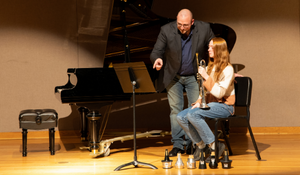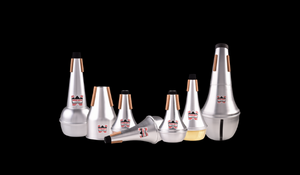6 Tips to Ensure Progress Between Lessons


The key to progress is often what we as musicians do between lessons, not what we do during lessons. Musicians often assume the more time they spend practicing, the better they will become. While we know that practice is needed to progress, how we go about this practice is key to how quickly the progress is made.
Lessons are where we learn new skills, home practice is where we master it. Students get minimal time with their teacher each week with 30 or 60 minute lessons being the norm. Progress in this time alone is not possible, which is why we need do home practice. There are many ways that we can make the most of our home practice to maximize progression between lessons.
1. Goal Setting. Having a well-planned set of goals is one of the keys to making progress between lessons. Having short, medium, and long-term goals is essential. Short term goals are what you want to get from this particular run through. Are you playing through a passage or are you practicing it and looking to stop and correct mistakes. Medium term goals are want you are aiming to achieve over the course of a week between lessons. You may want to take a particular passage from 80bpm to 120bpm by the next lesson. A long-term goal may be a solo or band work you are preparing for your next concert.
Setting these goals is the first part of the goal setting process. The second part is having a clear plan of how you are going to achieve these goals. Having a plan could involve keeping a journal or log to monitor your progress. An example of this may be with a medium-term goal, having a passage up to 120 bpm by the next lesson. You could have a plan to achieve 60 bpm on the day after your lesson, and progress by 10 bpm each day until your next lesson.
2. Scheduling in practice time. This may seem like a simple one, but many people don’t have scheduled practice times. With ever increasingly busy lives for many, finding the time to practice can be tough. I find that scheduling practice times for the week like you would any other appointment or class increases the likelihood of practicing every day. It may only be 15 minutes, while other days you may have 2 hours, but having a written schedule of when you are going to practice will help keep you progressing with daily sessions.
Further to this, one of the keys to progression between lessons is the regularity of practice. What we are doing during practice sessions is inputting data into our brain, so actions become muscle memory. This is far more effective if done regularly. For example, you are better off practicing daily for 20 minutes a day then doing one 2-3 hour practice session during a week.
3. Always practice slowly. As musicians, we want to feel that we are progressing towards our goals and often don’t fully learn the music slowly before increasing the tempo. Mastering the music slowly is key to muscle memory and being able to not only perform the music at the written tempo but be able to perform it comfortably and musically.
4. Have a separate copy to learn off. Make plenty of markings on your music to help you learn. Mark in EVERY breath mark, circle EVERY key change, EVERY time or tempo change, mark the phrase lengths and so on. Once you have learnt the piece with these markings on it, you can then mark up on your performance copy with just what you need to perform confidently.
5. Concentrated practice is key. 10 minutes of well concentrated practice with a goal in mind and a plan as to how to achieve that goal is far more effective than 60 minutes of unfocussed practice. Practice smarter, not necessarily longer.
6. Practice away from your instrument. There are many ways of practicing away from your instrument which will help you progress between lessons. This can be useful when you are unable to practice with your instrument due to the time of the day or not having your instrument with you. Listening to good quality recordings of the music you are learning is a great tool. Doing this both with and without the sheet music in front of you will help ‘learn’ the music without the added aspect of actually playing your instrument. It will allow you to fully focus on the music itself. For wind players, free blowing through passages of music is again a great tool which is often underutilized. This can allow you to work on tone, phrasing, and other music aspects quietly. You will also find that without the resistance of the instrument, you will start to play with more supported air when you do play with the instrument.
The key to progression as a musician is the work that we do between lessons at home. Regular, focused practice paired with clear goals and a plan of how to achieve those goals will maximize our progression and development.

Find all our Denis Wick resources in one spot on the Denis Wick app. Download to view videos, clinics, educator resources, podcasts, product information & more!



